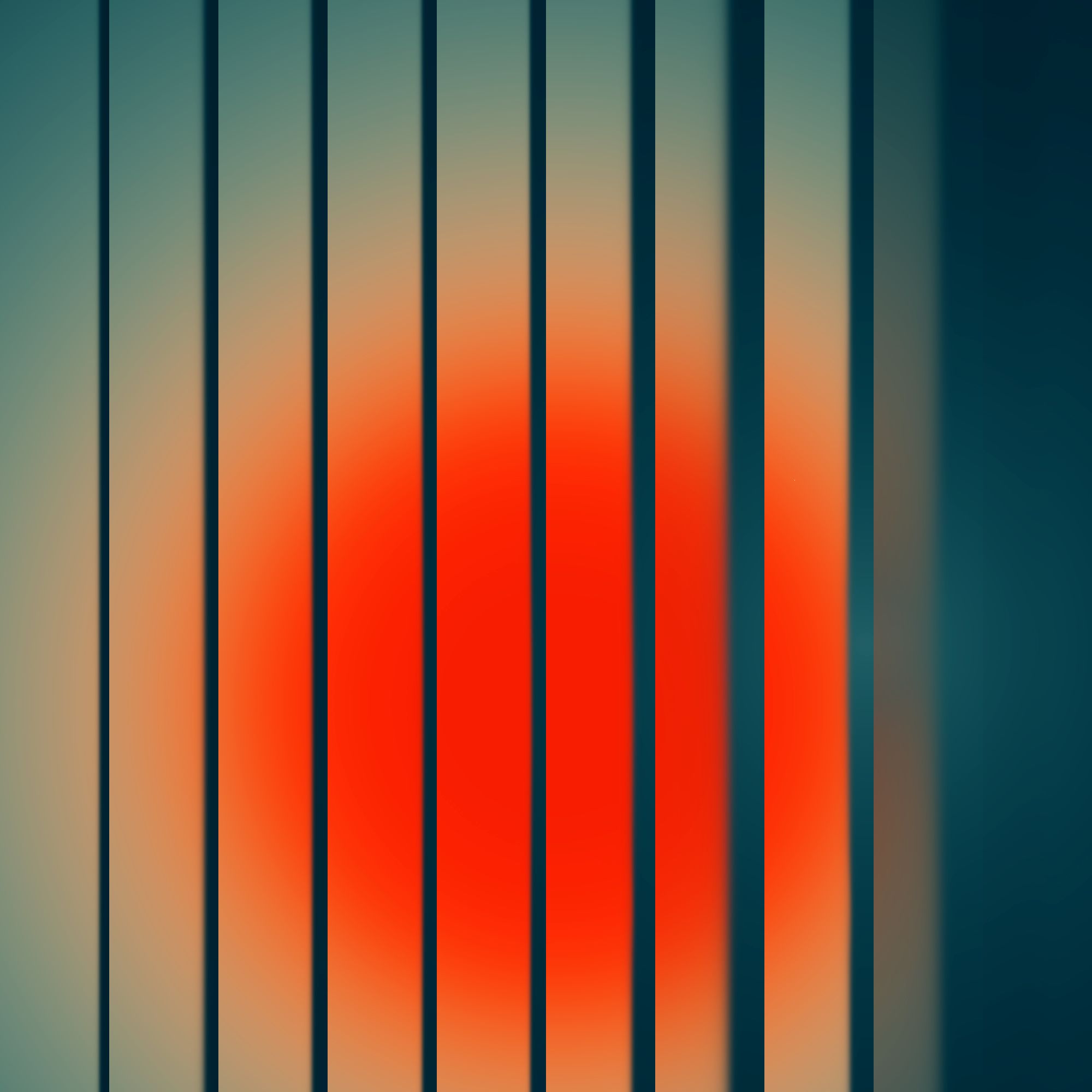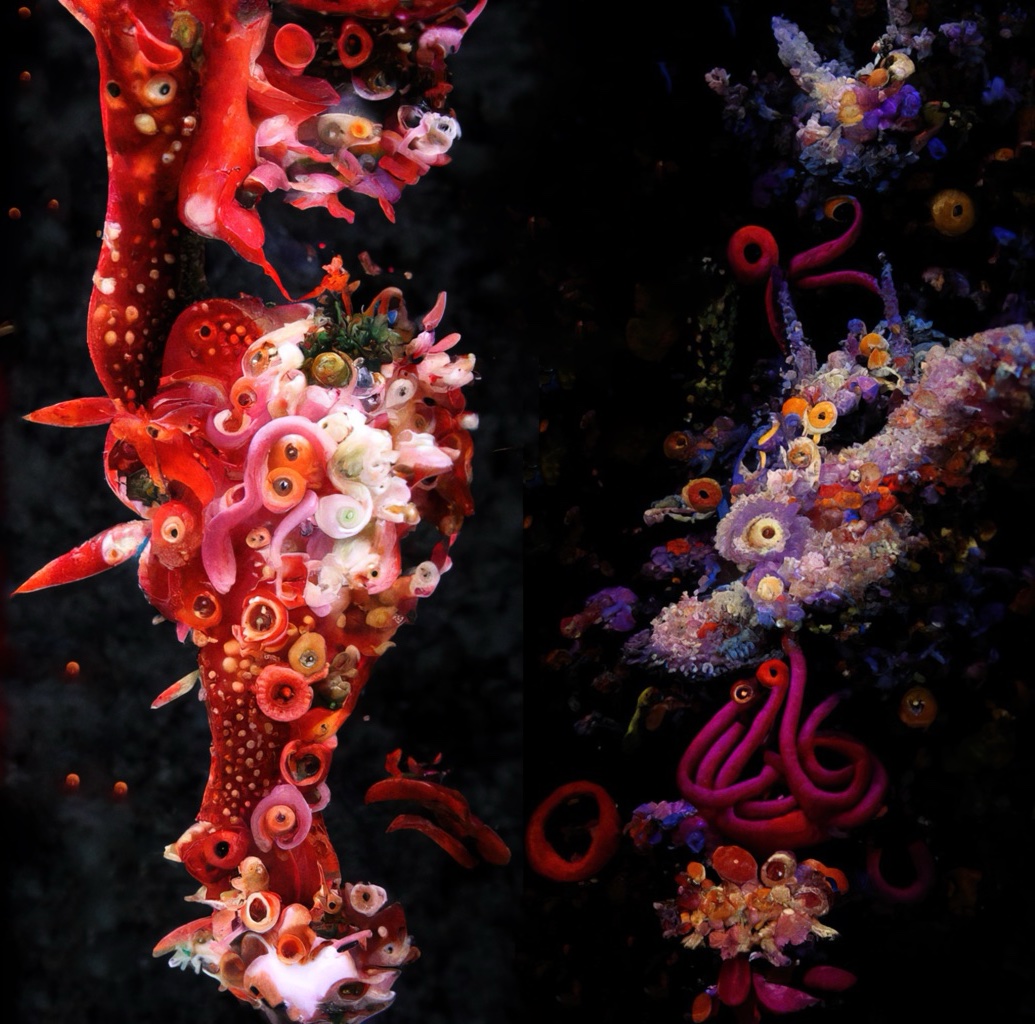
Infinite Images, Finite Control

Infinite Images, Finite Control
Kevin Buist considers Infinite Images: The Art of Algorithms, on view at the Toledo Museum of Art, Ohio, through 30 November 2025.
“There is one thing that can replace intuition; it’s randomness.” So reads a quote by the artist Vera Molnár high on a gallery wall in Infinite Images: The Art of Algorithms at the Toledo Museum of Art in Ohio. Julia Kaganskiy curated the group exhibition, featuring twenty-four artists with works from the 1960s to the present.
In the catalog essay, Kaganskiy explains that the show examines “how artists working with generative systems, both analog and digital, have historically negotiated chance and control, emergence and intention, and authorship with automation.”
The show is smart, layered and gorgeous, largely achieving what it sets out to do. Like any group show, there are both standouts and less compelling moments. To tick through each work and assess its quality would be lengthy and miss the forest for the trees. This review aims to work through a series of questions raised by Infinite Images, reflecting on what its insights might mean for the state of generative art.
Spending time with the show, I wondered, is this a future-oriented exhibition, where generative art is synonymous with artistic progress? Or is it more concerned with distilling a certain era of generative art in the face of the imminent ubiquity of generative AI?
Do the artists in this show view algorithmic strategies of making as an ideal that can only be achieved by stripping away excess? Or is a generative approach merely a foundation upon which many other artistic strategies are layered?
Finally, when bodies of work are created, sold and primarily viewed online and through personal screens, how do they succeed or fail as they make the jump to physical gallery space?
The works in Infinite Images are making distinct and often contradictory arguments about what generative art is and where it should go next. These artists can read Molnár’s quote about replacing intuition with randomness as a source of inspiration. But it can also be read as a direct challenge to some of the very artworks that hang below it.

I. Overview
The exhibition is divided into four sections. The first section, “The Imaginary Machine,” a reference to Molnár's machine imaginaire, grounds the show in early generative practices dating back to the 1960s. It includes paper and sculptural works by Sol LeWitt, color study prints by Joseph Albers, patterned geometric abstraction prints by Anni Albers, a print by Max Bill and a small survey of works by Molnár. The Paris-based Hungarian artist Molnár created the featured work using algorithmic systems with dice, early computers and, in 2023, a set of NFTs co-produced with Martin Grasser shortly before her death at age 99.
The next section is “Chance and Control,” where familiar works from the last few years of generative art on the blockchain appear, including Larva Labs’s Crypto Punks and Autoglyphs, Tyler Hobbs, Dmitri Cherniak and Snowfro.
The third section, “Digital Materiality," explores the physical realities underlying digital art. It includes pieces by DEAFBEEF, LoVid, Casey Reas, Zach Lieberman, Emily Xie, William Mapan and—each with their own separate galleries—Operator and Sam Spratt.
The fourth section, “Coded Nature,” traces the connections between biological and generative systems. It features works by Entangled Others (Sofia Crespo and Feileacan McCormick), Monica Rizzolli, Sofia Crespo and Anna Ridler, Jared Tarbell and Sarah Meyohas, with two moving image works in the smaller center gallery. The section also includes additional works by Reas and DEAFBEEF.
II. Progress or Nostalgia?
Beginning the exhibition with Molnár, LeWitt, et al., tells a story of generative art rooted in foresight. These figures anticipated a movement that would take decades to fully realize, becoming possible only when computing power, coding languages and networked global communities reached levels unimaginable in the 1960s. In the parlance of the crypto community, Molnár and LeWitt were so early.
But this pioneer narrative risks verging into techno-utopia. In an essay for the show’s catalog, Ruby Thelot presents increasingly complex stages in the development of generative art. He begins with LeWitt and leads to present-day artificial intelligence, which the author calls a “transformative leap” and a type of generative practice that “transcends mere execution and enters the realm of creation.”
In a similar vein, the young and visionary director of the Toledo Museum of Art, Adam Levine, spoke at one point during the opening weekend about the epic figurative work The Masquerade (2025) by Sam Spratt, which was produced with a custom generative AI trained by the artist. Levine explained that the small final gallery containing The Masquerade was a way of ending the show with AI because in the future “generative will be ubiquitous.”
I disagree with the idea that the generative art on view in Infinite Images is a stepping stone toward the inevitable ascendence of generative AI image-making.
Spratt is not the only artist in the show using generative AI; Sarah Meyohas, Entangled Others, and Sofia Crespo and Anna Ridler all employ custom generative AI models in their work. Spratt’s contribution, however, feels out of place. During a panel discussion, his process was described as using AI to clone the artist’s hand, creating a virtual atelier of skilled assistants. Unlike the other artists, who use the randomness of algorithmic systems to strategically cede control, Spratt uses generative tools to expand his agency over the image-making process, an approach seemingly at odds with the exhibition’s prevailing spirit.
Assessing other works in the exhibition, particularly those that carry forward the geometric abstraction from the earlier artists, the show feels nostalgic. Works by Reas, Cherniak, Hobbs and Lieberman feel minimal, elegant and more attuned to the aesthetic sensibilities of their forebearers than anything produced by the latest mass-market AI models.
If generative AI is truly the future of generative art, then Infinite Images feels like an attempt to freeze and preserve a period of generativity beginning in the 1960s and currently ending.
But I don’t believe that’s true. I think all the artists in the show, whether using custom AI models or more deterministic systems, will find new ways of creating with randomness, no matter how much computing power or new tools become available.
III. Reduction or Expansion?
Building Infinite Images on the foundations laid by Molnár and LeWitt is a strategy to link the younger, working artists to canonized art historical figures, making the case that generative art made today deserves its place in the art historical canon. But comparing the recent work to LeWitt, in particular, can also have the effect of making newer practices look ornamental, even busy.
Returning to Molnár’s quotation about randomness replacing intuition [editor’s note: the same quotation inspired our name “Le Random"], the exhibition features an awful lot of intuition. Is generative art a process of paring down artistic production, even to the point of giving up control of compositional and aesthetic choices? Or is generative art simply a framework an artist uses to build something more complex, personal and intuitive than a set of rules? The answer, according to Infinite Images, is yes to both.
A set of small prints by LeWitt in the first gallery, All Double Combinations (Superimposed) of Geometric Figures (Circle, Square, Triangle, Rectangle, Trapezoid, Parallelogram) (1977), contains every possible pair of these six shapes in fine white lines on a black background. The work is an example of LeWitt focusing his conceptual approach so tightly that the parameters clearly determine the outcome. The work represents a level of algorithmic clarity that is not repeated anywhere else in the show; it’s a complete system.
All the artists in the show, even Molnár, veer away from the reductive austerity achieved by LeWitt. But they vary in how they complicate generative practices and layer other modes of artistic production. Cherniak’s Ringers (2021) comprises 1,000 unique generative pieces in which lines loop around a randomized array of differently sized pegs and colors arranged on a grid. While capable of generating many more possible outcomes than LeWitt’s All Double Combinations, the twenty-five prints of Cherniak’s on view allow us to deduce the variables at play; the parameters are legible. Part of the pleasure comes from viewing multiple outputs of the same algorithm, and while not as limited as LeWitt, it shares the same spirit of clarity.

Other artists in the show seem less interested in extending LeWitt’s austerity, instead embedding generative processes into far more complex artistic practices. The duo Operator presents Human Unreadable (2023), an installation featuring video, sculpture, prints, research documentation and a mural depicting a dense technical flowchart.
The installation feels like a book unfolded across the walls, which could be a liability if it weren’t so fascinating. The artists used motion capture technology to codify dance choreography, then fed this information into an algorithm. The results are far more than generative choreography, blossoming into an ongoing, years-long series of multimedia outputs. The work is maximal and additive, even layering in a dose of fashion and personal branding by way of a sleek video that documents the artists at work, in which they always manage to look incredibly cool.
If the pleasures of Cherniak and LeWitt lie in deducing the logic of the algorithm, Operator elicits an opposite yet equally thrilling response. The installation overwhelms in the best way; generative processes are buried in there somewhere.
IV. Online or IRL?
The task of translating digital work into gallery surfaces asks fundamental questions about what an artwork is and what it does. Computers display images effortlessly but artists remain keenly aware that computers are dynamic, interactive systems—meaning the artworks often function as systems themselves.
The challenge with contemporary art spaces in their traditional form is they have no user interface. Several artists in the program addressed this problem directly by building user interfaces directly into their installations. DEAFBEEF modified an existing digital work, Glitchbox (2021), into sculpture with a screen of cubes held together by hand-cast iron elements. An analog control panel, fitted with bespoke iron knobs and dials, controls the pulsing ASCII visuals and retro synth soundtrack of the piece.
Tyler Hobbs’s QQL (2022) features a large screen to display the work and a smaller touchscreen interface nearby to adjust the parameters of the algorithms and produce new outputs. Visitors can email themselves their custom output as well as display it on the large screen for all to see. The interactive element is so engaging, in fact, that I found that it overshadowed the artist’s work beside it, Fidenza (2021).
Fidenza is a series of 999 generative works that are well-known in the NFT space. The selection presented here looks handsome in printed form; however, I couldn’t help but think that part of Fidenza’s allure was not knowing what a particular expression of the algorithm would look like before it was generated, while still knowing it would resemble a Fidenza. With the prints, this magic is gone; they’re just nice prints. QQL, meanwhile, felt more like a game—even a toy—and it captured the sense of discovery and play that generative art can elicit.
V. Closing
Infinite Images succeeds in placing contemporary generative art in the context of conceptual and early computer art. Its inclusion in a venerable institution like the Toledo Museum of Art helps make the case. While some artists are using custom GANs and other AI tools, the exhibition does not seem to point toward a future of ubiquitous generative AI. Rather, this is a group of artists who are invested in using technology to craft their own image-making systems by hand. In some cases this process is reductive and elegant; in others, layers of creative output build upon an algorithmic foundation. Instead of replacing intuition with randomness, the artists in Infinite Images fuse intention and chance, each in a distinct way.
----
Kevin Buist is an independent critic, filmmaker and design strategist who lives in Grand Rapids, Michigan.




